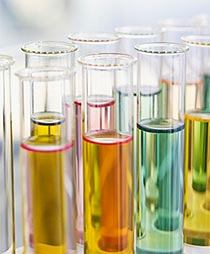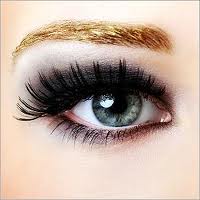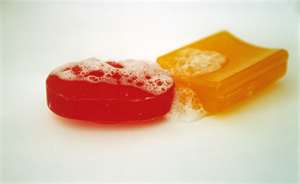If you are someone who is interested in anti-aging advances you’ve probably been hearing about peptides for quite some time. Since being added to skincare products peptides have been touted as a true anti-aging breakthrough and as an ingredient that will revitalize and rejuvenate the skin. Yet the question remains – are peptides truly an anti-aging breakthrough or is this just a lot of marketing hype?
What Are Peptides and What Do They Claim To Do?
Simply put – a peptide is a chain of amino acids that form a protein. Peptides have numerous applications when it comes to our health and wellbeing, but when it comes to skincare peptides are said to repair and regenerate the skin and to help rebuild collagen. But before you go out and purchase a product with peptides in it (these products are usually very expensive) there are a few things to keep in mind:
Peptides are biologically active compounds that closely resemble proteins—both are chains of amino acids. The difference? Peptide chains include fewer amino acids. Generally, a chain with more than 50 amino acids is a protein while those with fewer is a peptide. However, there are exceptions. Peptides are classified according to their length. Therefore, you’ll often encounter terms such as dipeptides—two amino acids; tripeptides—three; tetrapeptides- four; pentapeptides—five; and so on. Although there are probably thousands of naturally occurring peptides, to date, only several hundred have been characterized.1
Peptides play an array of important roles in the body, depending on the type. They may reduce inflammation, enhance antioxidant defense mechanisms, regulate bodily functions and even offer analgesic properties. In cosmeceuticals, three types of peptides are used, including:
- Signal peptides that encourage fibroblasts to increase production of collagen while decreasing the breakdown of existing collagen;
- Neurotransmitter peptides that limit muscle contraction and, thus, are said to mimic the effects of botulinum toxin; and
- Carrier peptides that stabilize and deliver trace elements necessary for wound-healing and enzymatic processes.
Given that signs of skin aging, including fine lines and wrinkles, are caused by a breakdown of collagen and elastin—the proteins that give skin strength and elasticity, as well as slow cellular turnover—the abilities of these peptides seem the perfect match for skin care formulations. However, not only are peptides expensive to utilize, in their natural state they also have shortcomings that significantly limit their potential in skin care applications. These shortcomings include the following.
- Peptides have a large molecular size and are hydropholic (water-liking), so they are unable to penetrate the lipopholic (fat-liking) stratum corneum layer of the epidermis.2 Despite this, peptides are generally unstable in water-based formulations. The presence of water breaks down the peptide bond, rendering it inactive.3
- Should peptides be absorbed, the abundant presence of enzymes found in the skin can also break down peptide bonds.4
Fortunately, peptides are easily modified to improve their characteristics relative to use in skin care formulations. Chemists have found creative ways to overcome their limitations, such as attaching a fatty acid component to improve absorption into the skin, specific activity and economic feasibility.
Source:Peptides: Ready for Primetime? by Ahmed Abdullah, MD in SkinInc.
Do Peptides Really Work in Skincare Products?
Here are some more consumer tips to keep in mind before purchasing a product with peptides in it:
Although chemists have found ways to optimize peptides for use in topical skin care formulations, they still face hurdles before they can generate the results anticipated by the consumers who buy them. Assuming the peptide has been modified to improve its stability in skin care formulations, through chemistry, the use of appropriate product packaging and its ability to penetrate the skin, it’s still essential that the product feature an effective delivery system to reach the target area where collagen synthesis, wound-healing and other activities may occur. Only when the peptide is absorbed by the skin and delivered to the targeted area in a stable form will it stand the potential of generating results.1
Formulators are certainly rising to this challenge. Sophisticated new delivery systems are regularly being developed, and the onus is on skin care professionals to stay on top of these new developments to ensure the products they are recommending stand a strong chance of truly providing their marketed benefits.
Another challenge: To be effective, peptides must be utilized in appropriate concentrations. Unfortunately, ingredient concentrations within a formulation are rarely disclosed on the label. Given the generally high cost of peptides, some manufacturers use them in concentrations below those utilized in scientific research or recommended by the peptide manufacturer. This is a marketing trick that allows the company to tout the use of a certain peptide and charge a lower price for the product. However, the formulation is nearly certain to be ineffective. Because of this, it is important to request and obtain backup research for product claims from manufacturers.
Speaking of research, although some third-party studies do exist that demonstrate positive outcomes from the use of peptides in skin care, there remains the issue of consumer expectations. For example, acetyl hexapeptide-8 is incapable of delivering results similar to that of botulinum toxin injections. Yet, this mantra is still promoted by many consumers and even individuals within the industry when referring to this compound. Because of this, consumer expectations are often out of line with the true capabilities of some peptide products. To be clear, if peptides were indeed able to produce results that matched much of the hype, they would be classified as drugs and require U.S. Food and Drug Administration (FDA) approval for use. To that point, it’s often necessary to downplay much of the hype surrounding the use of these ingredients until a stronger base of unbiased research exists.
Source:Peptides: Ready for Primetime? by Ahmed Abdullah, MD in SkinInc.
There are even more issues with peptides to keep in mind. Here is what Dr. Ellen Marmur in her book Simple Skin Beauty has to say about peptides (pages 288-289):
Much like growth factors, peptides are a bioengineered version of a natural element in the body. (Some natural moisturizers contain plant peptides, derived from wheat or rice. Along the same lines as kinetin, which has a plant growth factor, these may work as well as biotech versions. Considering that we don’t know what will penetrate the skin anyway, why not?) The idea of adding peptides to the skin is theoretically like sending in a surge of troops to carry out repair and regeneration. In vitro tests have found that pentapeptide-4 does prompt fibroblasts to product more collagen in cell cultures. (As usual, there is a serious lack of truly objective data since the companies that manufacture the peptide ingredients have funded most of the studies.) And remember, a cell culture is a dish of cells and is far cry from your skin.
My bottom line: Can peptides penetrate to the dermis to stimulate collagen production? Without scientific studies that biopsy the skin, it’s difficult to assess whether they can and if they really work. The inspiration behind these ingredients makes sense, and time will tell if some may be effective antiagers. Because peptides happen to be effective humectants, a product containing them will successfully hold moisture in the skin.
They’re worth a try, especially since you’re assured of getting an excellent humectant and most include antioxidant components too.
On the other hand, Dr. Leslie Baumann lists peptides as one of the “most misleading skin care claims of 2009“:
The theory is that topically applying peptides can trick our skin cells into producing even more collagen. In reality, peptides don’t penetrate the skin — if they did, other peptides such as insulin would already be supplied by creams rather than injections. Products like StriVectin may make the skin feel smooth but they have not been shown to have long-term clinically-significant benefits.
The Beauty Brains has even more damning things to say about peptides (though keep in mind that The Beauty Brains post I am quoting from is from 2008)
Peptides have no function in skin care products. They do not increase collagen or prevent DNA damage. They are story ingredients that make people feel better about the products they are using. There’s nothing bad about them in your skin product. They just don’t provide much benefit.
Should You Buy a Skincare Product with Peptides In It?
So who do you believe when it comes to the benefits of peptides in skincare products? I’m on the fence about this one – I do think that peptides in skincare products could be great, just make sure you get the right product. Remember these products are pricey. There are two good sources for specific product information – one is FutureDerm and another is Paula Begoun’s Beautypedia. I would check both of these sources before making any purchases.
Further Reading: Here are some more resources for peptide information – both for and against their use in skincare products
- Peptides: Cosmetic Ingredient Dictionary Paula Begoun
- The Next Generation of Peptides by Lydia Sarfati in Skin Inc.
- Cosmeceutical Critique: Peptides by Dr. Patricia Farris – The Skin Type Solutions Library under ingredients










Recent Comments